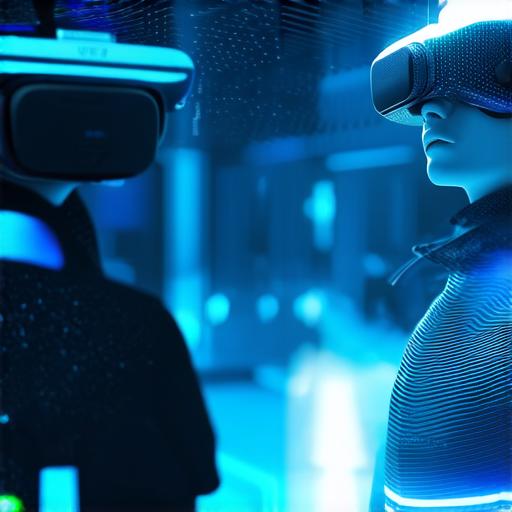What is Virtual Reality Exposure Therapy?
Virtual reality exposure therapy involves using a virtual environment to simulate real-life situations that trigger fear or anxiety in the patient. The goal of this type of therapy is to gradually expose the patient to these triggers in a safe and controlled environment, with the aim of reducing their anxiety levels over time.
Principles of Virtual Reality Exposure Therapy
VR exposure therapy is based on several key principles, including:
- Gradual Exposure: Patients are gradually exposed to increasingly challenging virtual environments that simulate real-life situations that trigger their fear or anxiety. This gradual exposure helps to reduce the patient’s anxiety levels over time.
- Immersive Experiences: The virtual environment is designed to be as immersive and realistic as possible, with high-quality visual and audio cues that create a sense of presence in the patient.
- Control and Safety: Patients have complete control over their exposure sessions and can pause or end the session at any time. This ensures that they feel safe and in control throughout the therapy process.
- Repetition and Reinforcement: Patients are exposed to the same virtual environment multiple times, with each exposure building on the previous one to reinforce learning and reduce anxiety levels.
Benefits of Virtual Reality Exposure Therapy
VR exposure therapy has been shown to be an effective treatment for a range of anxiety disorders, including PTSD, phobias, and social anxiety disorder. The benefits of VR exposure therapy include:
- Improved Anxiety Reduction: Studies have shown that VR exposure therapy can significantly reduce anxiety levels in patients with PTSD and other anxiety disorders.
- Reduced Avoidance: Patients who undergo VR exposure therapy are less likely to avoid situations that trigger their anxiety, which can lead to improved functioning and quality of life.
- Increased Exposure to Fear Stimuli: VR exposure therapy allows patients to confront their fears in a safe and controlled environment, increasing their exposure to feared stimuli over time.
- Improved Treatment Outcomes: Compared to traditional CBT or other forms of exposure therapy, VR exposure therapy has been shown to produce more rapid and durable treatment outcomes for anxiety disorders.

Real-Life Examples of Virtual Reality Exposure Therapy
One example of the effectiveness of VR exposure therapy can be seen in the treatment of PTSD in veterans returning from combat. A study published in the Journal of Traumatic Stress found that veterans who underwent VR exposure therapy had significant reductions in PTSD symptoms compared to those who received traditional CBT or no treatment at all.
Another example can be seen in the treatment of phobias, such as fear of heights or public speaking. A study published in the Journal of Anxiety Disorders found that patients who underwent VR exposure therapy had significant reductions in anxiety levels and avoidance behavior compared to those who received traditional exposure therapy without VR technology.
FAQs
1. What is virtual reality exposure therapy?
Virtual reality exposure therapy is a rapidly growing field that offers promising results in the treatment of mental health disorders, including PTSD, phobias, and social anxiety disorder.
2. How does virtual reality exposure therapy work?
VR exposure therapy involves using a virtual environment to simulate real-life situations that trigger fear or anxiety in the patient. The goal of this type of therapy is to gradually expose the patient to these triggers in a safe and controlled environment, with the aim of reducing their anxiety levels over time.
3. Is virtual reality exposure therapy effective for treating anxiety disorders?
Yes, VR exposure therapy has been shown to be an effective treatment for a range of anxiety disorders, including PTSD, phobias, and social anxiety disorder.
4. Can virtual reality exposure therapy be used to treat PTSD, phobias, and social anxiety disorder?
Yes, VR exposure therapy can be used to treat these conditions, as well as other mental health disorders.
5. What are the benefits of virtual reality exposure therapy compared to traditional CBT or other forms of exposure therapy?
VR exposure therapy has been shown to produce more rapid and durable treatment outcomes for anxiety disorders, with improved anxiety reduction, reduced avoidance, increased exposure to fear stimuli, and a greater sense of control and safety for patients.
Summary
Virtual reality exposure therapy is a promising approach to treating mental health disorders that offer an immersive and realistic experience for patients. With its focus on gradual exposure, immersive experiences, control, and safety, VR exposure therapy has been shown to be effective in reducing anxiety levels and improving treatment outcomes for PTSD, phobias, and social anxiety disorder. As technology continues to advance, we can expect to see more research on the efficacy of VR exposure therapy and its potential as a complementary treatment option for a range of mental health conditions.
